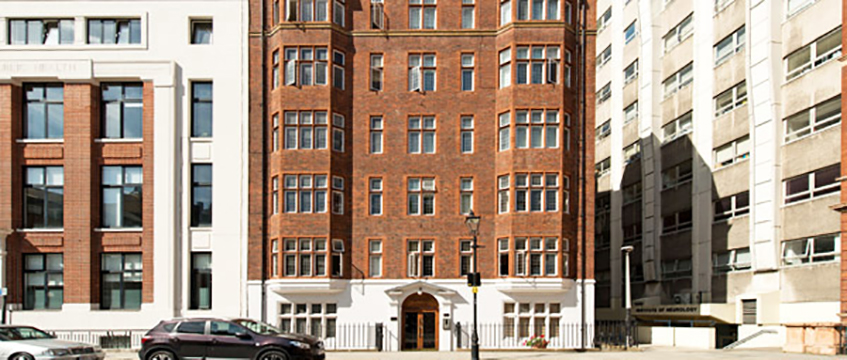Elizabeth Dwomoh revisits the definition of “common parts” in enfranchisement cases.
Key point
- The functionality test applies to whether an area can be defined as a “common part”
The Leasehold Reform, Housing and Urban Development Act 1993 (the Act) confers on qualifying tenants the right to collective enfranchisement. Additionally, there is also a right to acquire the leasehold interest of demised premises which consists of or includes any common parts.
In relation to any building or part of a building, “common parts” are defined in section 101 of the Act as including “the structure and exterior of that building or part and any common facilities within it.” Does the airspace, basement and sub-soil beneath a building fall within that definition? This was the primary issue in LM Homes Ltd and others v Queen Court Freehold Co Ltd [2020] EWCA Civ 371; [2020] PLSCS 41.
Common law principles
Queen Court was a purpose-built block of 45 flats in Bloomsbury. The qualifying tenants’ nominee purchaser was Queen Court Freehold Company Ltd (QCFC). The appellants, LM Homes Ltd, John and Florence Emore and Dalvir Kaur, held the respective leasehold interests in the airspace above, parts of the basement and the sub-soil beneath Queen Court (the demised areas). Each lease also contained development rights.
The Upper Tribunal (Lands Chamber) (UT) determined that the demised areas fell within the definition of “common parts”. Further, QCFC’s acquisition of the appellants’ leases was reasonably necessary as any development would affect the management and maintenance of the demised areas.
In reaching its decision, the Court of Appeal applied the following common law principles to QCFC’s right to acquire the freehold of Queen Court under the Act:
(a) the owner of the surface of land was entitled, within limits, to the airspace above it and the subterranean substrata below it. In such circumstance, an ordinary conveyance of the freehold of Queen Court would carry with it the freehold in all the demised areas subject to the leases;
(b) a building, once constructed, became part and parcel of the land itself; and
(c) the same principle applied to the airspace above the built structure.
Thus, in the case of a lease of the whole building, the grant of a lease would carry with it the airspace above the building.
The appellants had argued that the common law principles did not apply to the right of enfranchisement under the Act, but the Court of Appeal held that to find otherwise would lead to an undesirable and impracticable result. The absurdity of which meant that QCFC would not be able to enter the airspace to repair the roof nor could it disturb the subsoil of Queen Court to repair the foundations. Accordingly, for the purposes of the Act, the airspace and the sub-soil formed part of the “premises” the freehold of which QCFC was entitled to acquire.
Further, the primary term used to define “premises” under section 3(1) of the Act was “building”. Although the primary meaning of a “building” was a built structure, the Court of Appeal found that the context may require a broader meaning. Relying on Dartmouth Court Blackheath Ltd v Berisworth Ltd [2008] EWHC 350 (Ch); [2008] 2 EGLR 141; Denetower Ltd v Toop [1991] 1 EGLR 84; Cadogan v Panagopoulos [2010] EWHC 422 (Ch); [2010] 2 EGLR 151 (upheld by the Court of Appeal EWCA Civ 1259; [2011] 2 EG 76) and Merie Bin Mahfouz Co (UK) Ltd v Barrie House (Freehold) Ltd [2014] UKUT 390 (LC); [2015] EGLR 22, it found that in the context of the Act both the airspace and the sub-soil were part of the building. Therefore, the demised areas were parts of the building as defined by section 3(1) of the Act.
Definition of common parts
On the question of whether an area demised in a lease fell within the definition of “common parts” under section 101(1) of the Act, the starting point was the facts at the date the notice to enfranchise was served under section 13 of the Act. An additional important factor was how parts of the building were used – the so called “functionality test” – and not the title under which they were held.
In the present case, the common parts included not only the physical plant machinery, which provided the services, but also the space in which they were housed. The function of the basement area was to accommodate service installations for the benefit of the whole building. Accordingly, that was sufficient to render it part of the “common parts” of the building.
Further, although the airspace and sub-soil were not within the envelope of the built structure, both fell within the meaning of “building” under section 3 of the Act. The definition of “common parts” under section 101(1) of the Act was inclusive rather than exclusive. Those areas could be regarded as part of the building itself or as part of the exterior of the building for the purposes of section 101(1) of the Act.
Reasonably necessary to acquire?
The Court of Appeal upheld the UT’s finding that due to the development rights contained in the leases, it was reasonably necessary for QCFC to acquire those leases. QCFC could not properly manage the demised areas as common parts if they were changed into residential flats.
The take away
The decision highlights the potential problems landlords and investors can encounter in partitioning areas of a property for development when a right to enfranchisement exists.
Elizabeth Dwomoh is a barrister at Lamb Chambers









